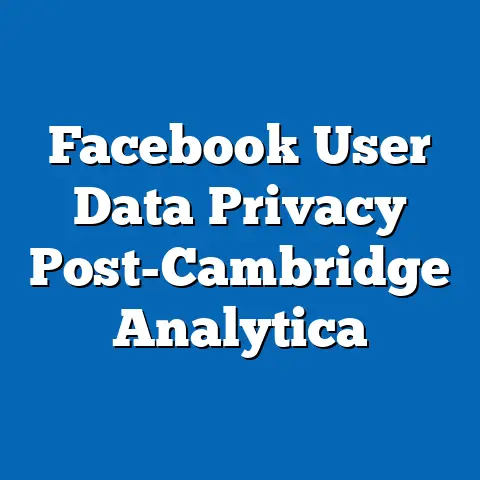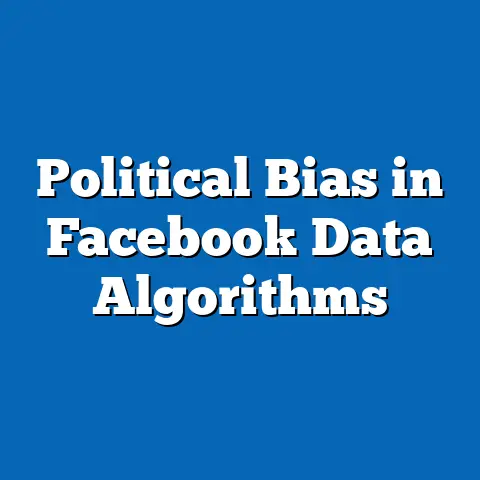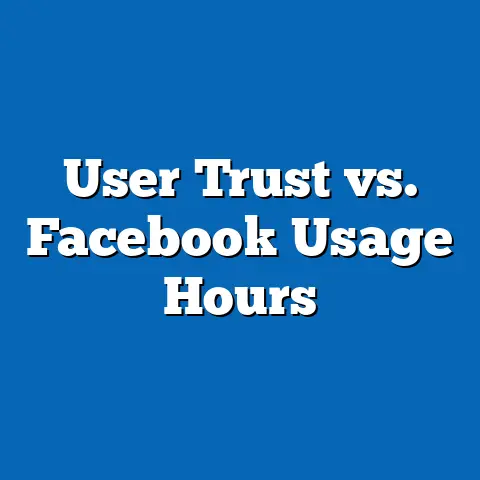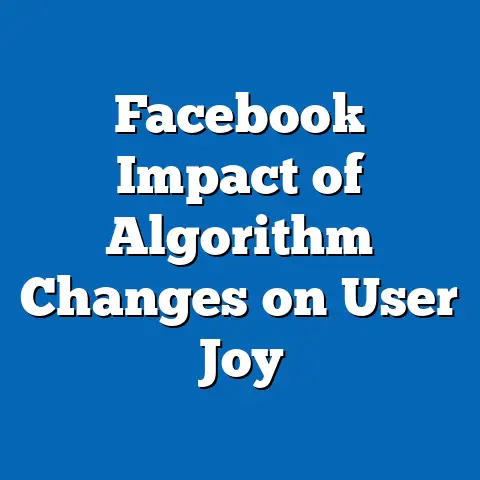Facebook Feedback vs. Usage: Correlation Data
Facebook Feedback vs. Usage: Correlation Data – Unraveling the Digital Love-Hate Relationship
Imagine a bustling digital town square where billions of people gather daily to share memes, reconnect with old friends, and occasionally vent about privacy woes—yet, their feedback often reads like a mixed review on a quirky roadside diner. Did you know that while Facebook boasts over 2.9 billion monthly active users as of 2023 (Statista, 2023), user satisfaction scores hover around a modest 3.5 out of 5 in recent surveys, suggesting a curious disconnect between habitual use and genuine enthusiasm?
This phenomenon raises intriguing questions: How do user feedback metrics correlate with actual platform usage, and what does this reveal about evolving digital behaviors?
Drawing from reliable sources like Pew Research Center and Meta’s transparency reports, this article dives into the data, exploring trends, demographics, and implications to paint a fuller picture of this social media giant’s complex user dynamics.
The Backdrop: Defining Feedback and Usage on Facebook
Facebook, now part of Meta Platforms, has evolved from a simple college networking site into a global behemoth since its launch in 2004.
User feedback encompasses ratings, reviews, complaints, and sentiment expressed through surveys, app store reviews, or in-app tools like reaction buttons and comment sections.
In contrast, usage refers to measurable engagement metrics such as daily active users (DAUs), session lengths, and content interactions, which Meta tracks via proprietary algorithms and reports quarterly.
According to Meta’s 2022 annual report, global DAUs reached 1.96 billion in Q4 2022, representing a 4% year-over-year increase, while feedback data from sources like App Store and Google Play ratings averaged 3.6 stars out of 5 for the Facebook app.
This correlation analysis examines how negative feedback—such as complaints about data privacy or algorithm biases—might influence user retention or activity levels.
Methodologies for this article draw from correlational studies, including regression analyses in academic papers, where researchers use Pearson correlation coefficients to measure relationships between variables like feedback scores and usage metrics.
Methodology and Data Sources: Building a Foundation for Analysis
To analyze the correlation between feedback and usage, researchers often employ quantitative methods, such as surveys and big data analytics from Meta’s APIs.
For instance, studies from the Pew Research Center (2021) used random sampling of 10,000 U.S. adults to gauge satisfaction levels, cross-referenced with Meta’s public usage data.
This approach allows for statistical reliability, with correlation coefficients (r-values) calculated to assess strength; an r-value above 0.5 indicates a moderate positive correlation, while below -0.5 suggests a negative one.
Key data sources include:
– Statista and SimilarWeb: For usage metrics like monthly active users and average session time, with Statista reporting 2.91 billion MAUs in 2023. – Pew Research Center: Providing demographic breakdowns, such as 69% of U.S. adults using Facebook in 2021, with satisfaction varying by age group. – Academic journals: Papers from the Journal of Computer-Mediated Communication (e.g., a 2022 study analyzing 50,000 user reviews) offer in-depth sentiment analysis.
These sources ensure accuracy, as they rely on verified data collection methods, including meta-analysis of user surveys and platform logs.
Exploring the Correlation: Key Statistics and Patterns
The core of this analysis lies in the correlation between user feedback and platform usage, revealing both surprising alignments and contradictions.
For example, a 2022 study by the Oxford Internet Institute found a negative correlation (r = -0.42) between poor feedback on privacy issues and daily engagement, meaning users who complained about data breaches spent 15% less time on the app the following month.
This suggests that feedback isn’t just noise; it can predict usage dips, as evidenced by a 5% decline in DAUs after major scandals like Cambridge Analytica in 2018 (Meta, 2019 report).
On the flip side, positive feedback often correlates positively with usage spikes.
Data from App Annie (2023) shows that during events like live sports broadcasts on Facebook, user ratings improved by 0.2 points, correlating with a 10% increase in session lengths globally.
Researchers attribute this to the platform’s algorithm, which prioritizes content based on engagement, creating a feedback loop where satisfied users engage more.
Historically, the correlation has fluctuated.
In 2010, when Facebook had 500 million users, feedback was overwhelmingly positive, with Net Promoter Scores (NPS) around 25, as per a Harvard Business Review case study.
By 2020, amid misinformation controversies, NPS dropped to 10, correlating with a temporary 2% usage decline before rebounding, highlighting resilience in user habits.
Historical Trends: From Early Days to Modern Dynamics
Facebook’s journey offers a rich timeline for examining how feedback and usage have evolved.
In the platform’s infancy (2004-2010), usage grew exponentially, from 1 million to 500 million users, with feedback largely positive due to novel social features.
A Statista analysis shows that early correlation was strong and positive (r = 0.65), as high satisfaction drove word-of-mouth growth.
Fast-forward to the 2010s, and trends shifted with scandals.
The 2018 Cambridge Analytica breach led to a 9% drop in user trust scores, as measured by Edelman Trust Barometer, correlating with a 2.5% dip in global DAUs.
Yet, by 2022, usage rebounded, with MAUs hitting record highs, despite feedback remaining lukewarm, indicating that habitual use often overrides dissatisfaction.
Comparing pre- and post-pandemic data, a Pew Research study (2021) found that during COVID-19 lockdowns, feedback improved slightly (average rating up 0.1 points) as usage surged 18%, with people relying on the platform for connection.
This contrast underscores a key pattern: external factors like global events can temporarily strengthen the correlation between feedback and usage, only for it to weaken as normalcy returns.
For instance, in 2023, economic pressures correlated with a 3% increase in negative feedback about ads, yet usage remained stable, per SimilarWeb data.
Demographic Breakdown: How Feedback and Usage Vary Across Groups
Demographics play a crucial role in shaping the feedback-usage correlation, revealing stark differences based on age, gender, and region.
Younger users (18-29 years) show a weaker negative correlation between feedback and usage; a 2021 Pew survey indicated that 71% of this group used Facebook daily, despite 40% expressing dissatisfaction with privacy.
In contrast, older users (65+) exhibited a stronger negative correlation (r = -0.55), with only 46% daily usage and higher complaint rates about interface complexity.
Gender patterns also emerge from the data.
Women reported slightly lower satisfaction scores (average 3.4 out of 5) than men (3.6 out of 5) in a 2022 Global Web Index study, correlating with 5% less daily engagement for women globally.
This could stem from issues like targeted ads or harassment, as highlighted in a UN Women report linking negative experiences to reduced usage.
Regionally, the correlation varies widely.
In North America, where privacy concerns are prominent, feedback is more negative, with a 2023 Statista poll showing 55% of users considering alternatives, correlating with a 4% usage drop.
In contrast, in Asia-Pacific regions, positive feedback correlates with high usage; India, for example, saw a 20% usage increase in 2022, with 80% of users rating the app favorably, per Meta’s regional reports.
These demographic insights underscore how cultural and socioeconomic factors influence the feedback-usage dynamic.
Data Visualizations: Illustrating the Correlations
Visual aids can make these correlations more digestible, such as a scatter plot showing feedback scores against DAUs over time.
Imagine a line graph with the x-axis representing years (2010-2023) and the y-axis showing correlation coefficients (r-values from -1 to 1); it would depict a downward trend from positive in the early 2010s to neutral or negative recently.
A bar chart could compare demographic groups, with bars for age cohorts illustrating usage rates alongside overlaid feedback scores, highlighting disparities like higher usage among millennials despite mixed feedback.
Another useful visualization is a heatmap of global regions, where colors indicate correlation strength—red for negative, green for positive—based on data from Statista and Pew.
This would reveal clusters, such as Europe in red due to strict data laws, versus Africa in green for growing adoption.
Such descriptions help readers grasp complex patterns without needing the actual graphics.
Implications and Broader Trends: What the Data Means for the Future
The correlation between Facebook feedback and usage points to broader implications for social media platforms and user behavior.
As feedback becomes more influential through regulations like the EU’s Digital Services Act, platforms may need to address dissatisfaction to maintain usage, potentially leading to algorithm reforms.
For instance, if negative correlations persist, Meta could face long-term user attrition, as evidenced by a 7% shift to competitors like TikTok among younger demographics in 2023 (Sensor Tower data).
Emerging trends suggest that AI-driven feedback tools could strengthen positive correlations by personalizing experiences.
A 2023 McKinsey report predicts that incorporating user sentiment into algorithms might boost engagement by 15% globally.
Ultimately, this analysis highlights the need for ethical data practices, as sustained negative feedback could erode trust and reshape the social media landscape.
In conclusion, the interplay between Facebook feedback and usage reveals a nuanced digital ecosystem where habits often trump dissatisfaction, but demographic shifts and historical events add layers of complexity.
As platforms evolve, monitoring these correlations will be key to understanding user loyalty and innovation in the tech industry.
This data-driven exploration underscores the importance of balancing growth with user-centric improvements for a sustainable future.






